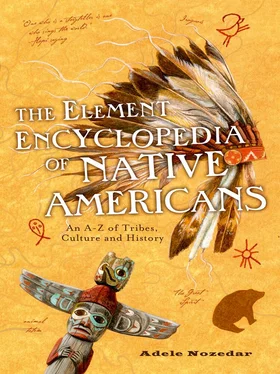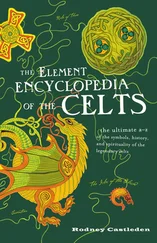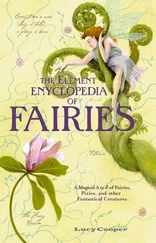Single Abenaki men could be identified by their long, untied hair; when a prospective wife came along, the man would tie back his hair. Once married, the Abenaki husband showed his status by sporting only a high ponytail and shaving the rest of his head. Before the need to alter his hairstyle arrived, however, there was the matter of arranging the marriage. This wasn’t always simple. A proposal of marriage was not simply for the prospective partners, but a matter for the whole village. And the bride and groom would make a gift to one another of a fine box, engraved with the loved one’s attributes.
Other decisions besides betrothals were decided by the entire group. Everyone was given the right to an equal say, and to simplify matters various members would elect a single spokesperson. The Abenaki also had a system in which an impartial person would arbitrate in the case of disagreements. Until all parties agreed, there was no resolution.
At the time of writing, the Abenaki are still not recognized federally, although the state of Vermont recognized their status as a People in 2006. At the time, the authorities noted that many of the Abenaki had been “assimilated.”
1760(?)—1860(?)
Born in Georgia, Abiaka, a.k.a. Sam Jones, was a medicine man, spiritual leader, and also chief of the Muskogee Seminoletribe, who lived in the southeastern United States. He played a major part in the Seminole resistance to relocation, a resistance which would ultimately result in the establishment of a Seminole reservationin Florida. Perhaps not so famous as the other most influential of Seminole chiefs, Osceola, who died in his thirties, Abiaka was able to use powerful “medicine” to stir his men up into a frenzy, managing to keep the uncompromising resistance strong during many years of war, starvation, and hardship; no doubt the fact that Osceola had been attacked, imprisoned, and kidnapped after he was invited to peace talks fueled Abiaka’s determination not to fall for the same ploy.
Above all, it seems that Abiaka provided a consistent reminder to his people of their spiritual strength. After the third of the Seminole wars, Abiaka moved to the Big Cypress Swamp with a small band of men and a larger number of women and children. By this time he was in his nineties, still retaliating against removal despite his great age.

The seed of the oak tree, the acorn was a very useful foodstuff for the Native Americans in and around California. An entire community would gather to harvest the crop, which was processed by being shelled and then mashed in a mortar and pestle. Eaten alone, an acorn is bitter because of the tannins that it contains; however, the Native Americans had an ingenious method of leaching out this bitterness. First they would dig a shallow pit in clean sand, then line it with a dough made from ground acorns. Then hot water would be poured onto the dough. As the water seeped through the acorn paste and into the sand, it would carry away the bitter tannic acid. After this process, the dough would be baked into bread or used in soups.
One of the Algonquiantribes, the Adirondack were so-named by the Mohawk; the word means “They Eat Trees” or “Bark Eaters,” and is likely to have been used as a derogatory name. The name refers to the Adirondack habit of chewing the bark of certain trees, and although most authorities suggest that the Adirondack only ate bark at times when there was nothing else available—that is, during times of famine when sustenance was scarce—it is likely that bark would have been an important staple. The inner part of the Eastern White Pine, which grows prolifically in the area, is not only tasty but nutritious and easy to carry, and Native American peoples have a tradition of being extremely resourceful when it comes to identifying edible plants.
The Adirondack lived north of the St. Lawrence River, and, like the Abenaki, allied themselves with the French during the Anglo-French wars.
Incidentally, the Adirondack Mountains and National Park are named after the Adirondack peoples who once roamed the area.
Common to the Pueblopeoples, “adobe” is a particular kind of brick made from dried grasses and mud, and baked in the sun. Alternatively, the term is used to refer to the mortar that holds such bricks in place.
The name of a trading post in the Texas Panhandle area on the Canadian River. Adobe Walls is infamous as the site of a terrible battle between 28 white men and one woman, and the massed forces of some 700 Kiowa, Comanche, and Cheyenne, in June 1874. The Native Americans wanted to destroy the contingent at Adobe Walls to protest at the white men’s wholesale slaughter of the buffalo, which accorded no respect to the animal which was so vital to the survival of the tribes.
Despite their numbers, the white settlers had the advantage of guns, and managed to fight off the Natives, who were massacred. Some 100 died at Adobe Walls; only three of the white men perished.
When the huge animals that formed the primary part of the diet of the early Native Americans eventually died out, they were forced to turn their attention to hunting smaller prey, including birds. Around the same time, Native Americans also began to forage for wild plants, not only as a source of food but also as a source of medicine.
It may come as a surprise that 60 percent of the food we eat today comes from plants that were discovered, and then developed, by early Native Americans. These foods include the potato, the tomato, and, most important of all, maize, or corn.
The first corn came from a wild grass called teosinte that grew in Mexico. The early men and women that lived there managed to modify this grass by selecting those with the fattest heads and cross-fertilizing them with other hardy grasses. By a time a thousand years prior to the birth of Christ, corn was the most important vegetable foodstuff in Mexico. The cultivation of corn then spread into the American southwest and was adopted by three civilizations that became famed for their farming methods. These were the Anasazi, the Mogollan, and the Hohokam.
The earliest of these three peoples were the Mogollan, who dwelled on the borders of what is now New Mexico and Arizona between A.D. 150 and 1450. Their homes—subterranean pits covered by a “roof” of brush and plaster made from mud—would develop into stone dwellings.
Next came the Hohokam, who lived in the scorchingly hot Sonoran desert west of the mountains that bordered the Mogollan areas. They lived between A.D. 200 and 1450. The harshness of their environment forced them to become ingenious, and they discovered that they could make the dusty desert soils and sands blossom by means of irrigation. They built hundreds of miles of canals, up to 25 feet wide, sourcing their water from the Gila and Salt rivers. Their crops included corn, beans, squash, and cotton. Examination of Hohokam remains has revealed rubber balls; this is a mystery, since at the time of the Hohokam, rubber was unavailable in Arizona.
Around A.D. 1450 the Hohokam seem to have simply disappeared. It is possible that a drought or a crop failure caused them to disband and seek other places to live.
Читать дальше













